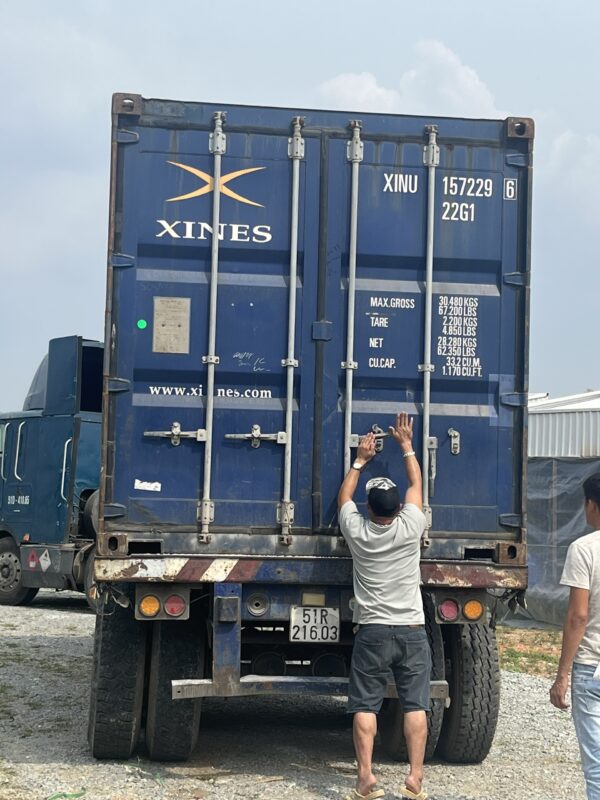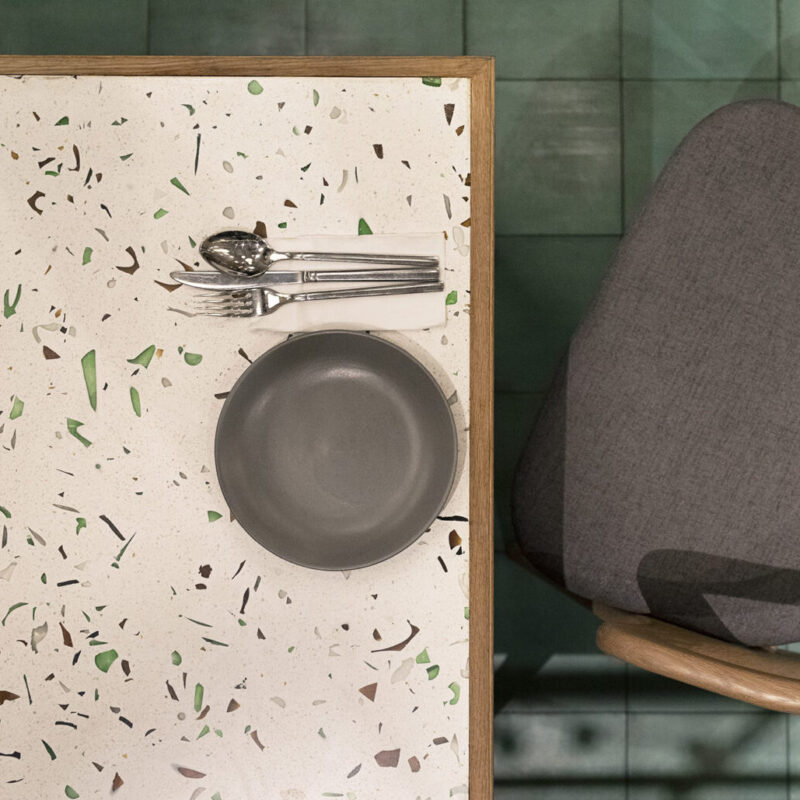
Image content: Inspired from the Northern region in Vietnam, a duo selected from Fansipan and Red River Series.
The Rise of Sustainable Building Materials:
A Low-Carbon Future for Construction
The construction industry is going green. Governments around the world are pushing for more sustainable building practices to curb carbon emissions and reduce environmental impact. The days of resource-intensive materials and inefficient building techniques are numbered. Distributors and suppliers need to get on board with eco-friendly alternatives now to meet new regulations and stay ahead of the curve.
Tile manufacturers have a huge opportunity to lead the charge. Consumers want beautiful, durable surfaces that also reflect their values. Sustainable concrete tiles made from recycled materials are the best of both worlds. They check all the boxes: high-performance, low-maintenance, and environmentally-friendly. The technology and techniques to produce these next-gen tiles are available now.
Forward-thinking distributors should start sourcing sustainable tile options today. The rise of eco-conscious building materials is happening, and it’s happening fast. Companies that get into the game early will be poised to capture market share as sustainable construction goes mainstream. The future is green for tile—and for the planet. Distributors ready to make the switch to sustainable surfaces will help make that future a reality.
Building Towards a Sustainable Future:
Why Sustainable Construction Matters
Sustainable construction is crucial for a low-carbon future. It reduces the environmental impact of buildings by using eco-friendly materials and efficient processes.
Governments worldwide are targeting net-zero emissions, and the building industry generates nearly 40% of global CO2 emissions. Sustainable building practices are key to achieving climate goals and a greener future.
Sustainable materials like low-carbon concrete, recycled steel, and reclaimed wood are renewable and recyclable. They cut down on waste and pollution from production and transport. Using local materials also supports regional economies.
Sustainable construction benefits people and the planet. It improves indoor air quality, natural lighting, and thermal comfort for occupants. It conserves natural resources and protects biodiversity.
While sustainable building costs more upfront, it saves money long-term through lower utility bills and maintenance. It also raises property values as eco-friendly homes become more desirable.
The construction industry is transforming to meet environmental challenges. Sustainable materials and building techniques are the foundation for a low-carbon future where people live and work in harmony with nature. Governments, companies and individuals must work together to make sustainable construction the new standard. Our planet depends on it.

Image content: At Picasso, we aim to tread lightly and reduce our impact on nature. All of our products are carefully packaged to ensure safety and quality, as well as to minimize waste and greenhouse gas emissions during transportation.

Image content: Our products are made in Ba Ria – Vung Tau, Vietnam. All raw materials are locally sourced and often have been recycled.

Image content: A Picasso Terrazzo table top made from recycled aggregates, originally restaurant’s plastic waste – one of our collaborations with Pizza 4Ps, Vietnam.
Governments Pushing for Low-Carbon Building Materials
Governments around the world are pushing for more sustainable building materials to lower carbon emissions from construction. According to the UN Environment Program, the building and construction industry accounts for 39% of energy-related carbon dioxide emissions.
In response, governments are targeting concrete, steel, glass and asphalt – the materials that make up the bulk of building structures and components. For example, the US Federal Emergency Management Agency (FEMA) now defines “low-carbon materials” as concrete, asphalt, glass and steel that have a lower global warming potential.
Similarly, the Australian government aims to reduce emissions from building materials by at least 25% by 2030. They are incentivizing manufacturers to develop new low-carbon product lines, like architectural precast concrete surfaces, that are made from geopolymers, fly ash and recycled materials.
Forward-thinking companies are already producing sustainable alternatives, from low-carbon concrete tiles and slabs to recycled steel beams and solar glass panels. These eco-friendly materials not only reduce carbon footprints but also create a competitive advantage for builders and architects looking to the future.
With governments putting sustainable construction in the spotlight, the low-carbon building materials industry is poised for growth. For companies on the cutting edge, the future looks bright green.
Low-Carbon Concrete:
An Eco-Friendly and Durable Alternative
Low-carbon concrete is an environmentally friendly and durable building material alternative.
Reduced Carbon Footprint
Low-carbon concrete replaces Portland cement with recycled waste materials like blast furnace slag, fly ash, and limestone dust. Fly ash can decrease concrete’s carbon footprint by up to 80% while increasing strength and workability. Using industrial byproducts reduces the demand for cement, the production of which accounts for 8% of the world’s carbon dioxide emissions.
Enhanced Properties
Incorporating fly ash and slag enhances concrete’s properties. Fly ash increases concrete’s strength and durability over time. Slag reduces permeability, making concrete more water resistant. Limestone calcined clay cement can replace up to 50% of Portland clinker, reducing carbon emissions without compromising performance.
Cost Savings
Waste materials are inexpensive, reducing raw material costs. Low-carbon concrete can cost up to 30% less than traditional concrete, saving money for builders and buyers. Lower cement content also reduces costs associated with transporting and handling materials.
Forward-thinking governments and companies are promoting low-carbon concrete to build a sustainable future for construction. Using recycled industrial byproducts to create eco-friendly yet high-performance building materials helps ensure that the structures of today become the sustainable infrastructure of tomorrow.
The Case for Sustainable Precast Concrete
Precast concrete is emerging as a sustainable building material for the future. Precast manufacturing produces concrete slabs and tiles with a smaller carbon footprint compared to traditional pour-in-place methods.
Less Concrete and Waste
Precast concrete uses less raw materials like concrete, steel, and water. It also generates less waste since mixture proportions and tolerances are tightly controlled. Excess concrete is not poured and then scraped away. This reduces the overall environmental impact compared to pour-in-place.
Lower Carbon Emissions
The controlled precast process emits fewer greenhouse gas emissions. Precise mixture designs and efficient production methods require less transportation and pumping of concrete. Curing also takes place in a controlled environment, reducing emissions from the chemical reactions during hardening.
Reusability and Recycling
Precast concrete elements can be reused or recycled. Tiles and slabs in good condition can be repurposed for new projects. Crushed precast concrete can replace natural aggregates in new concrete or be used as road base. Steel reinforcement bars are also easily extracted and recycled.
Precast concrete ticks the boxes for sustainable and eco-friendly building materials. Tightly controlled manufacturing, less waste, and recyclability make precast a key part of a low-carbon future for construction. For tile distributors and architects seeking sustainable yet stylish options, precast concrete surfaces should be at the top of the list.
Conclusion
The construction industry is embracing a sustainable future, and building material companies would be wise to follow suit. Governments around the world are incentivizing the use of eco-friendly materials and setting ambitious emissions targets. Distributors and suppliers should get on board now to meet the growing demand for sustainable products. The planet will thank us, and innovative companies will reap the rewards. Low-carbon concrete and recycled tiles are just the beginning. The future is green for those ready to build it.
